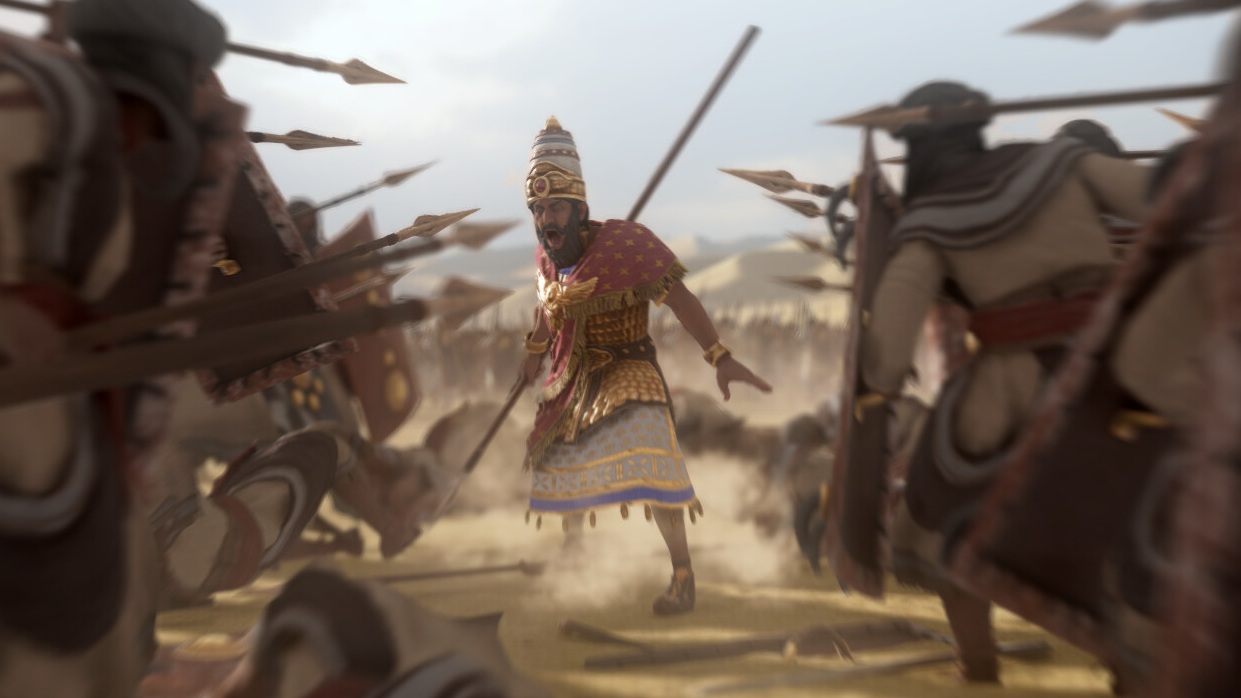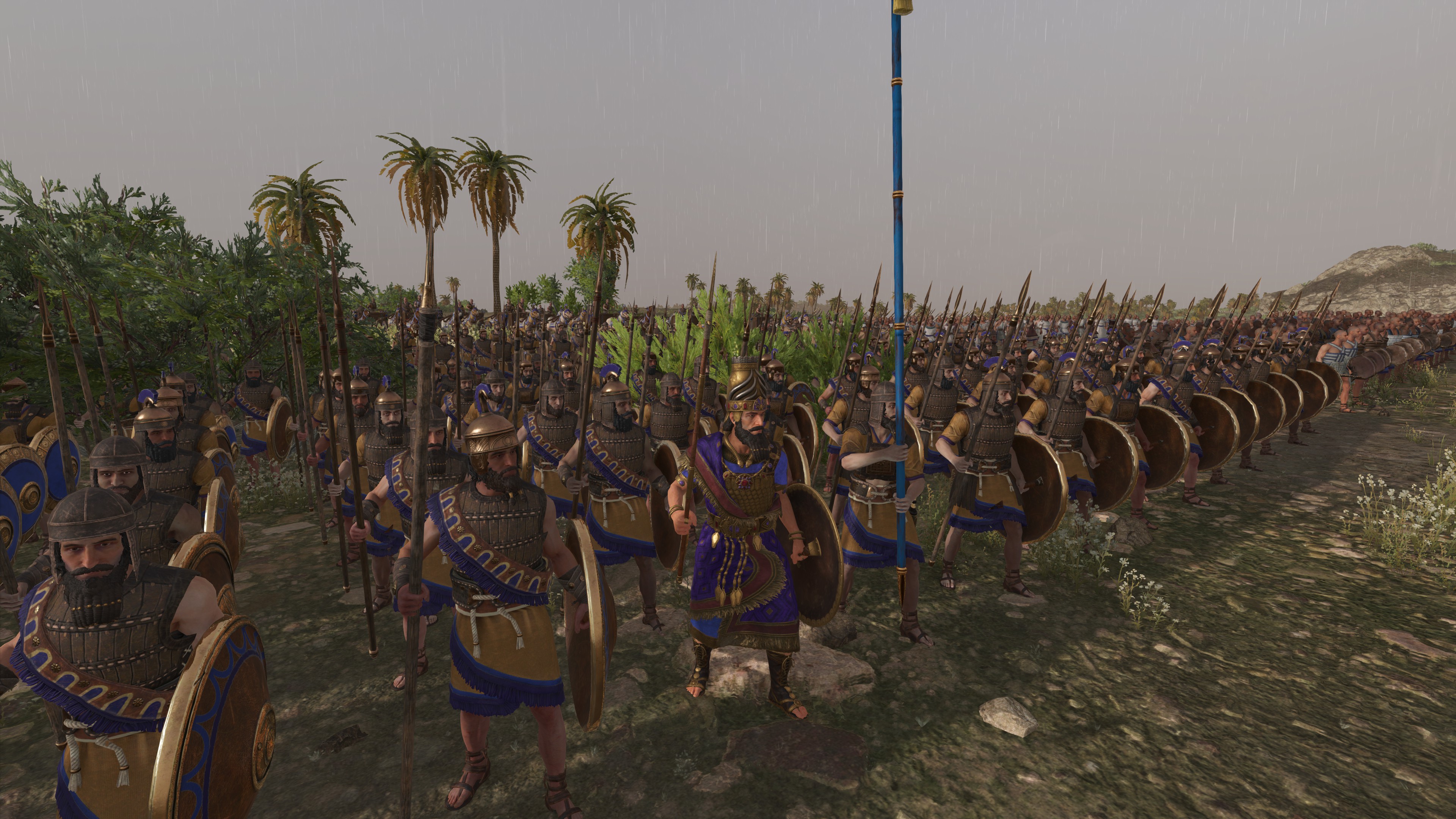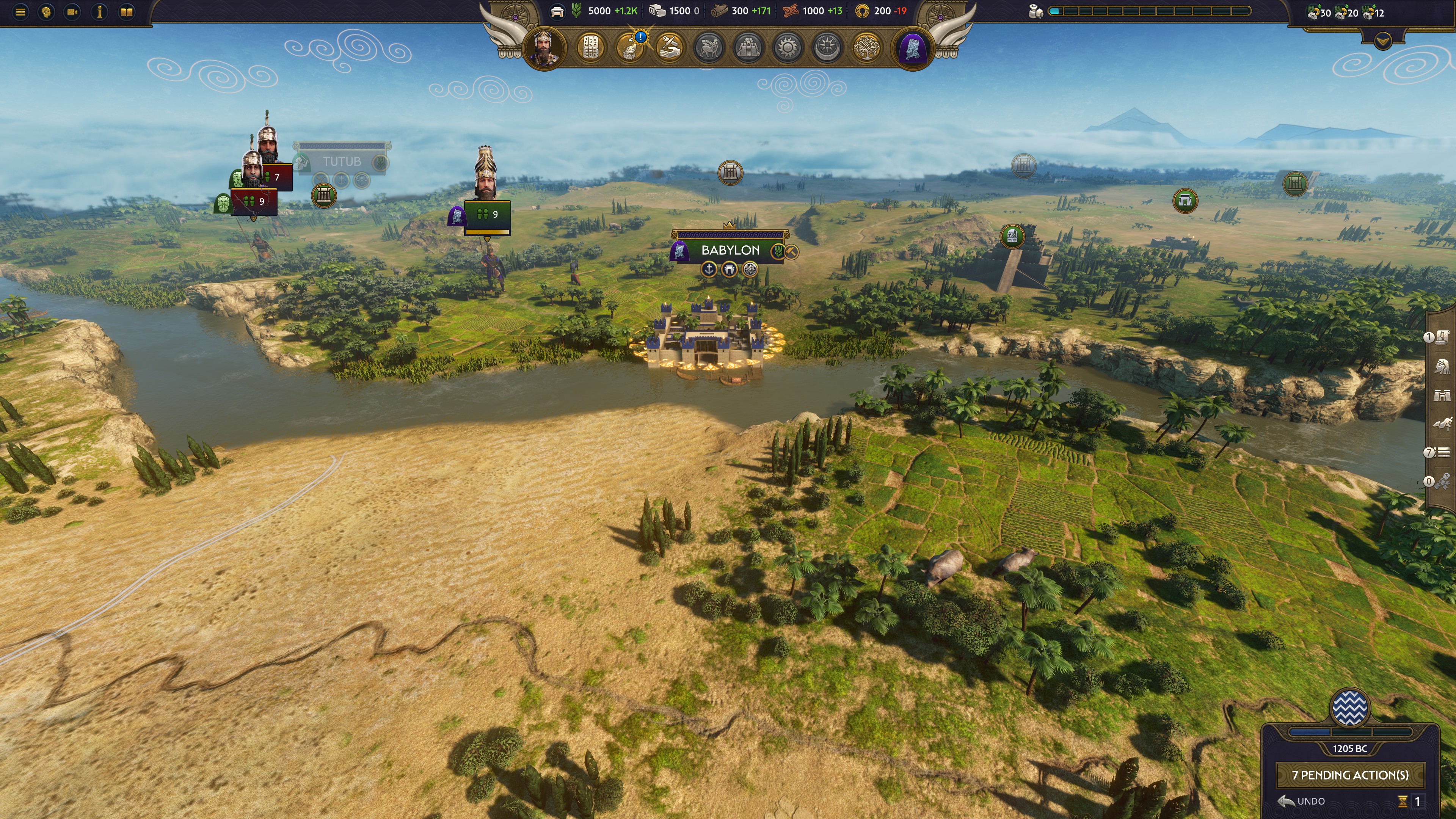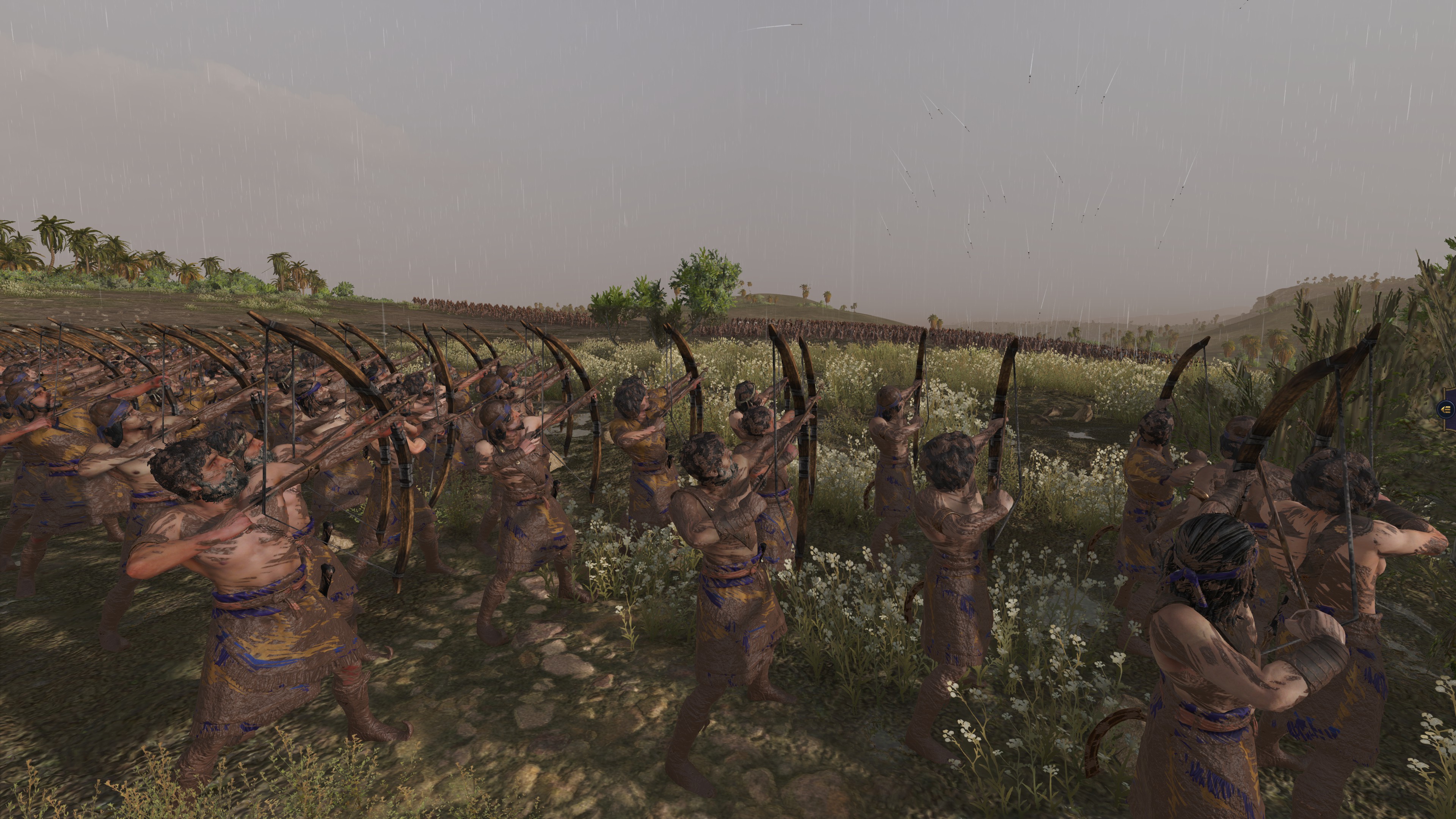
Total War: Pharaoh got off to a bit of a rocky start, mostly by no fault of its own. It released at a time when community sentiment around Creative Assembly was at perhaps an all-time low, with discontent about the quality and pricing of Total War: Warhammer 3 DLC, the debacle surrounding the cancellation of Hyenas, CA's most expensive game ever, and at least for me, the lingering, soul-deep resentment over the abandonment of Total War: Three Kingdoms.
But Pharaoh itself was actually pretty great, to be honest. And with the crowning Dynasties update, it has really become the full-featured and comprehensive Total War: The Bronze Age game I've been daydreaming about since A Total War Saga: Troy.
The scope of this update is hard to undersell. In addition to stapling the entire Aegean from Troy onto Pharaoh's already considerable map of Egypt, the Levant, and Central Anatolia, Dynasties also extends to the East with a brand new Mesopotamia region along the Tigris and Euphrates rivers. In terms of sheer dimensions, this is now the largest map for a historical Total War game ever, almost doubling the area and faction count of base game Pharaoh.
March of time
There's a lot of interesting stuff packed into those new areas, too. We got new royal traditions for Mesopotamia and the Aegean. A number of Homeric heavy-hitters are back, including Agamemnon in Mycenae and Priam in Troy. And in addition to all the Aegean units imported from Troy, Assyria and Babylon in the East also got full-fledged rosters of completely new units. Not just at the faction level, either—each of these regions also has its own native unit rosters, representing the local, tribal populations that have their own aesthetics and fighting styles and can be recruited by anyone who rules over their home area.
It seems clear to me that Creative Assembly Sofia has taken the bulk of what was probably supposed to be multiple paid DLCs (including the earlier High Tide update that let you play as the marauding Sea Peoples) and added it to the base game. Perhaps at some point, the plan was to release Troy, Pharaoh, and a third game focusing on Mesopotamia individually, before combining them into a megacampaign similar to Total War: Warhammer's Immortal Empires map. What Dynasties managed to pull off, amazingly, seems to be almost all of that.
It's not that there aren't some rough edges here and there. For example, dynamic aging and royal family trees only apply to male characters. The lovely Helen of Troy is forever enshrined as a 2D drawing, even in her old age. There are some hints here and there of cut content, suggesting that perhaps Troy's Amazon factions were at one point meant to be included. Not every culture group has their own unique cutscene for a Civil War starting like the Egyptians and Hittites do. I've also found the AI to be a bit inconsistent in dealing with some of the new mechanics. In particular, they seem to be somewhat confused about what to do with the nomadic outposts Sea Peoples factions can now build in razed territories.
King of Kings
But ultimately, I'll take huge and messy most of the time over scaled-back and polished when it comes to my Total War grand campaigns. Zooming out and realizing that I've spent 150 turns entirely within the boundaries of Mesopotamia hammers home that Dynasties stands alongside the likes of Rome 2 and Attila in scale and ambition—even surpassing them in some ways. Troy and the base game of Pharaoh felt more like standalone expansions, with a focus on a specific conflict. Dynasties feels like it should properly be called Total War: The Bronze Age. It's an enormous main series grand campaign, with a dizzying diversity of units and cultures to play with.
Now, one of my initial criticisms of Pharaoh was that I worried we may actually have too many campaign mechanics at this point. And Dynasties doesn't help that, layering even more on top such as a succession and royal marriage system. But I also found that, the more hours I put into it, the more I appreciate having more to think about on any given turn than my next conquest. Having great leaders pass on and give way to a new generation helps things feel fresh, as the children and grandchildren of Ramesses and Achilles have to live up to their mythical ancestors' legacies.
Keep up to date with the most important stories and the best deals, as picked by the PC Gamer team.
The variety between campaigns is also enormous. Maybe even more so than Three Kingdoms, though the focus is more on the running of the state than interpersonal relationships between characters. With 14 major leaders across six culture groups that each have a full array of individualized mechanics and flavor, I'm already planning not just my next campaign, but my next two or three.
It's a bit disappointing that the 25 new minor factions added in this update don't get the same treatment. I mean, for one thing, 25 new minor factions! But knowing that we probably won't see the likes of Ajax or Achilles elevated to Major Faction status leaves me pining for what might have been. If Pharaoh had sold better, would they have gotten to flesh these factions out more? Only two major characters for all of Mesopotamia and the Aegean, respectively, leaves a lot of room for expansion. One Assyrian and one Babylonian, when so much work went into adding them both as entirely distinct cultures, stings just a bit. And the characters who did have their own mechanics in Troy but don't get to keep them in Dynasties make that sting more painful. But still, I have to commend them for making all these guys playable at all.
All I beheld
As much as I can wish for more, the breadth and depth of this update is far above and beyond anything I would have predicted in the wake of Pharaoh's launch. I thought we'd maybe get a Sea Peoples DLC and that would be it. I didn't expect them to add the entire map from Troy. I certainly didn't expect Mesopotamia to be a thing. And I sure as Osiris' missing genitals didn't expect playable Phrygians, Pelagasians, Thracians, and Elamites as minor factions. It's the antithesis of the common gamer refrain that everything is cut up and sold to us in pieces these days, and I have to imagine Sega had to say goodbye to a lot of DLC dollars to make it happen. I feel so far from done with Pharaoh now, which is very different from how I felt at launch. The Bronze Age may be collapsing, but Creative Assembly Sofia held the line to the end on this project and delivered something that shines in the bright Mediterranean sun.
Len Hafer is a freelancer and lifelong PC gamer with a specialty in strategy, RPGs, horror, and survival games. A chance encounter with Warcraft 2: Tides of Darkness changed her life forever. Today, her favorites include the grand strategy games from Paradox Interactive like Crusader Kings and Europa Universalis, and thought-provoking, story-rich RPGs like Persona 5 and Disco Elysium. She also loves history, hiking in the mountains of Colorado, and heavy metal music.




